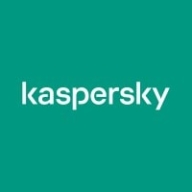

SentinelOne Singularity Complete and Kaspersky Endpoint Security for Business compete in the cybersecurity space. SentinelOne has the upper hand in features and ease of deployment, while Kaspersky leads in pricing and customer service satisfaction.
Features: Users value SentinelOne for comprehensive threat detection, automated response, and AI-driven capabilities. Kaspersky stands out for protective measures against a range of cyber threats, integration with IT infrastructure, and strong protective features.
Room for Improvement: Kaspersky requires easier configuration of advanced features, more intuitive experience, and improved ease of use. SentinelOne needs better granular control, performance improvements, and enhancements in overall control aspects.
Ease of Deployment and Customer Service: SentinelOne is praised for quick deployment and responsive customer service. Kaspersky, though complex to roll out, is noted for detailed guides and robust customer support.
Pricing and ROI: Kaspersky offers cost-effective pricing with better ROI due to its protective features at a lower price point. SentinelOne, despite being pricier, is valued for its advanced technology and efficiency, making the investment worthwhile for many users.
Since then, I have not faced any intrusions, which is one reason I chose SentinelOne over ESET.
We have not faced any attacks since we implemented it.
It has absolutely helped reduce our organizational risk.
The technical support from Kaspersky was very responsive.
They do a great job of figuring out the problem and pointing you to generic documentation or working with you to fine-tune a solution.
We are using the automated email process for support, and they respond within an hour or two hours sometimes.
A chat service would be beneficial.
Any endpoint added to Active Directory can be detected by Kaspersky Security Center, which can then push the agent onto it.
It's all auto-scale and auto-categorized, configuring automatically.
The tool's built-in automation for deploying the agents works well for large infrastructures like mine.
My deployment is relatively small, and SentinelOne Singularity Complete works within those constraints.
There have been performance issues during scanning, causing the PC to respond slowly.
It has caused problems with interoperability between third-party tools, which could lead to entire servers crashing or specific tools failing.
This indicates room for improvement in stability when interacting with other solutions.
Initially, there were issues, particularly on the management side, but now the console is much more stable.
Kaspersky needs to improve its security techniques as it has not been in Gartner records for the last two years.
The only thing that prevented the attack from succeeding was a free version of Malwarebytes.
Providing a single pane of visibility for the end user would be beneficial.
It's challenging to prevent a user from manipulating their privileges or someone else's of others, and it's difficult to control what users can access at the organizational level.
The pricing and licensing cost of Kaspersky Endpoint Security is cheaper compared to Trend Micro.
If you want protection, you have to pay the price.
They counted many of the instances and licenses as duplicates despite them only being alive once, which was frustrating.
It’s cheaper than other competitors.
It stands out as an antivirus and malware protection solution due to its extensive feeds and resources for antivirus signatures.
I have an advanced app providing visibility of all my endpoints, which was not the case before.
SentinelOne has a feature to decommission automatically, which has been fantastic.
There's also automation that gives my team free time, preventing them from having to look for every alert.


Kaspersky Endpoint Security for Business is a cybersecurity solution that is designed to protect small and large business networks and devices from all types of cyber security threats by implementing machine learning algorithms for real-time threat detection and response. The solution offers antivirus protection, firewall, network attack protection, web control, device control, data encryption, reporting tools, and more. Kaspersky integrates with a wide variety of external systems and platforms and is easy to customize to meet your organization’s specific security needs.
Benefits of using Kaspersky Endpoint Security for Business
Some of the key benefits of using Kaspersky Endpoint Security for Business include:
Kaspersky Endpoint Security for Business features
Kaspersky Endpoint Security for Business provides its users with a wide range of features to protect their corporate networks and devices against multiple types of threats, including:
Reviews from Real Users
Kaspersky Endpoint Security for Business stands out among its competitors for a number of reasons. Several major ones are its high performance, flexibility, and powerful virtualization capabilities.
Natnael A., a consultant at IWM Network Solutions, writes, “The app virtualizing is a great feature. The system developers use it to deliver apps to targeted staff. It basically reduces the server infrastructure resource. The solution provides good functionality.”
Rob M., a systems administrator at Saint Tammany Parish Hospital, says, “The solution has provided flexibility by allowing an end user to remote in, log in, and get their VM. VDI session and have all the icons and applications they need to use and retain the same booking view regardless of location.”
SentinelOne Singularity Complete provides AI-driven threat detection and response with features like ransomware protection and rollback, offering endpoint protection with minimal system impact and deep forensic analysis.
SentinelOne Singularity Complete combines machine learning and artificial intelligence to offer robust endpoint protection. It delivers real-time insights and advanced threat detection through seamless integration with third-party tools, allowing for efficient endpoint management. With an emphasis on user-friendliness, it ensures reduced false positives. Room for improvement includes better integration options, enhanced reporting, and more precise analytics to tackle false positives. Users seek improved interoperability with systems and comprehensive support for legacy systems.
What are the key features of SentinelOne Singularity Complete?Organizations from industries like finance, healthcare, and technology deploy SentinelOne Singularity Complete to safeguard endpoints such as PCs, servers, and virtual machines. Equipped with EDR, it effectively replaces traditional antivirus systems and integrates with cloud technology for real-time security insights.
We monitor all Endpoint Detection and Response (EDR) reviews to prevent fraudulent reviews and keep review quality high. We do not post reviews by company employees or direct competitors. We validate each review for authenticity via cross-reference with LinkedIn, and personal follow-up with the reviewer when necessary.